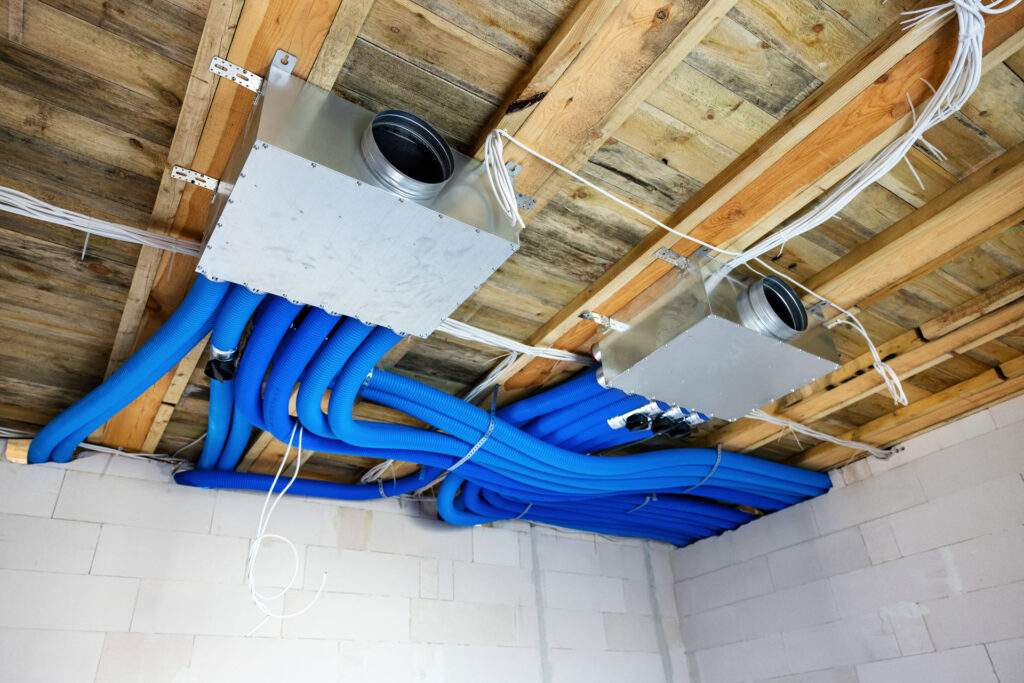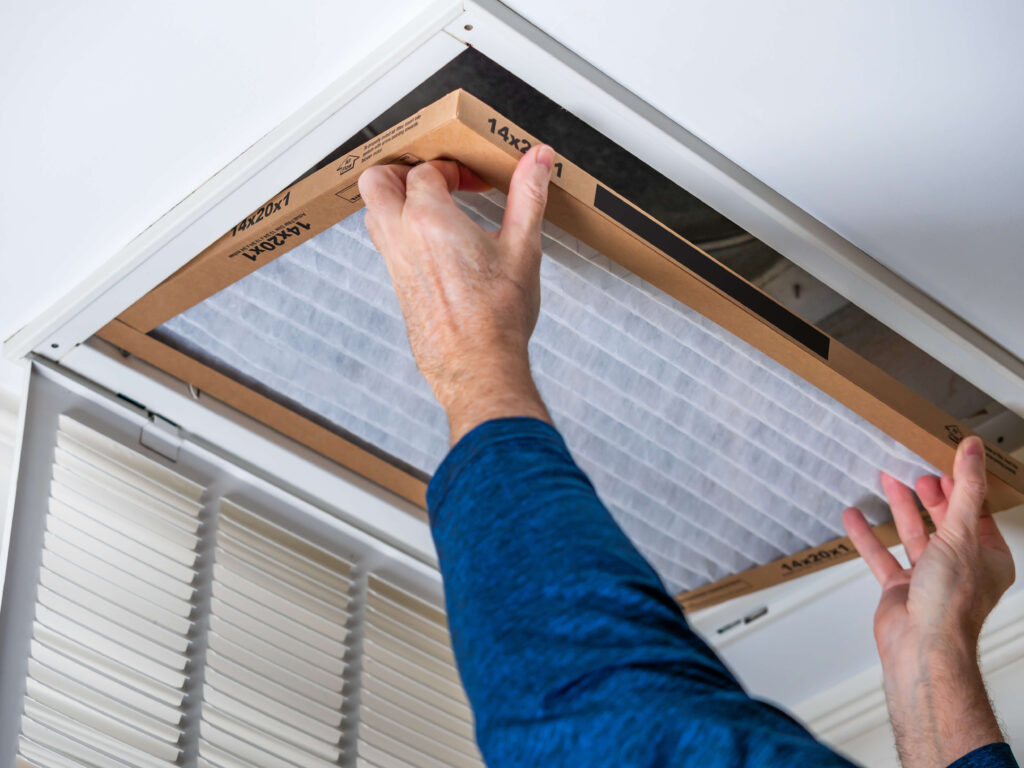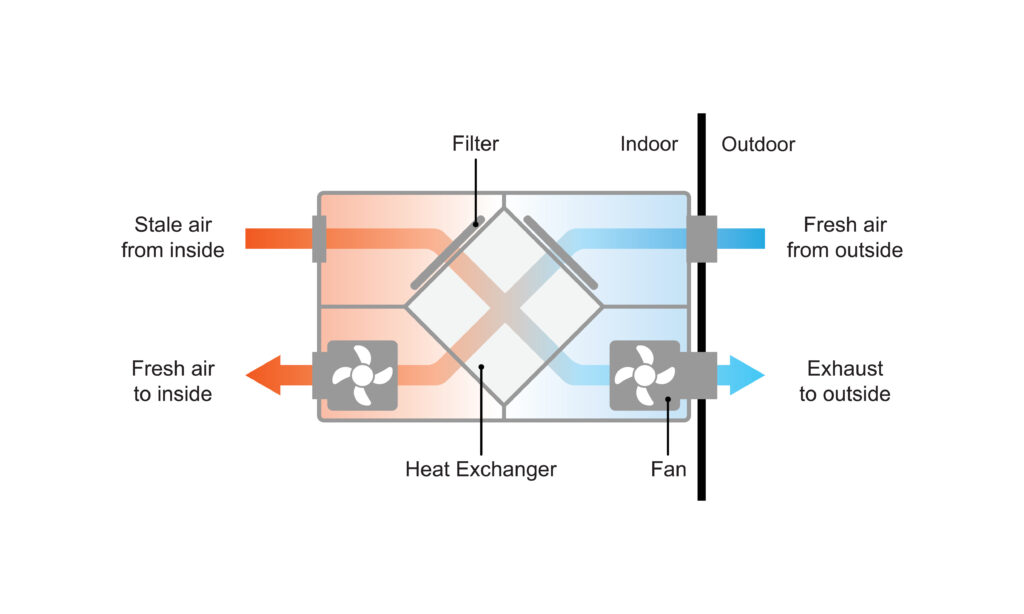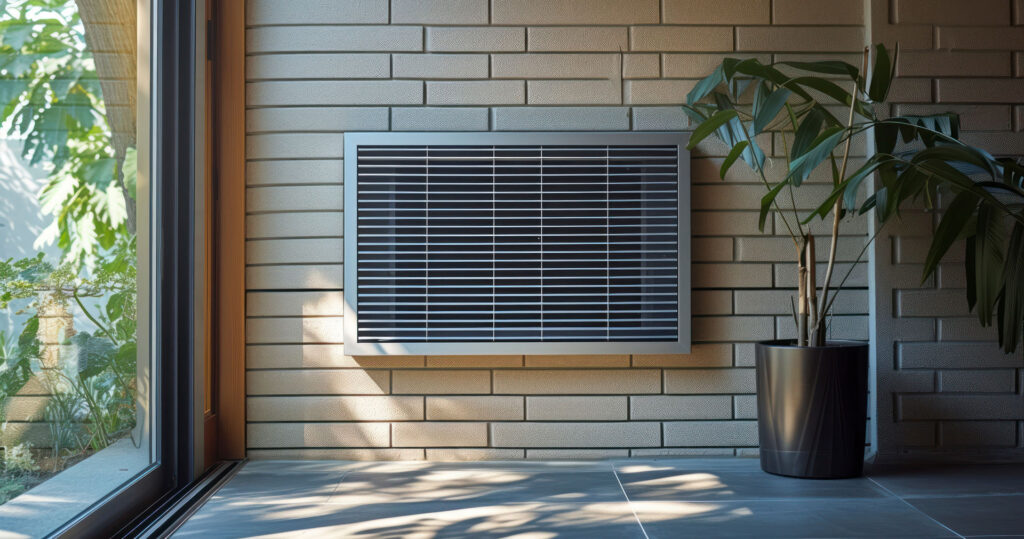Ventilation & Filtration

Providing Comprehensive Indoor Air Quality Services
Benefits of Air Filtration Systems
Whether you’ve already conducted an air quality test or harbor concerns about airborne contaminants in your Bellevue home, our team is here to assist. Our Bellevue indoor air quality specialists can assess whether installing an air filtration system would be beneficial for you and your family. Should you require servicing for your air filtration system, count on us to deliver prompt and efficient repairs and maintenance. Rest assured, we’re committed to helping you take command of the toxins and allergens in your home, allowing you to reap the benefits of an air filtration system.
Some of these advantages include:
- Enhanced system efficiency
- Reduction in energy costs
- Prolonged lifespan of your HVAC system
- Mitigation of moisture and biological growth
- Alleviation of breathing issues and allergies


What Is an Energy Recovery Ventilator?
An Energy Recovery Ventilator (ERV) is a system designed to improve indoor air quality and energy efficiency within a building. In environments where buildings are constructed to minimize natural air infiltration to enhance energy efficiency, ERVs play a crucial role in maintaining healthy indoor air. They work by exchanging stale indoor air with fresh outdoor air, ensuring that air quality is preserved without significantly increasing HVAC operating costs.
The principle behind ERVs involves the transfer of energy (in the form of heat and sometimes moisture) from outgoing stale air to incoming fresh air. During colder months, this means pre-warming the incoming air with the heat recovered from the outgoing air, thereby reducing the heating demand on your HVAC system. Conversely, in warmer months, the system cools and can dehumidify the incoming hot outdoor air by transferring its heat and moisture to the outgoing cool indoor air, reducing cooling needs.
Compared to traditional ventilation methods, which may simply expel conditioned air and replace it with outdoor air at the expense of energy, ERVs recapture a significant portion of the energy from the conditioned air that would otherwise be lost. This energy transfer is made possible through various technologies, such as rotating wheels or fixed plates, which allow for the exchange of heat and moisture without mixing the outgoing and incoming air streams directly.
One key benefit of ERVs is their ability to improve comfort and lower operating costs, particularly in climates with extreme temperatures or high humidity levels. However, it’s important to note that while ERVs can significantly reduce the energy required to condition incoming air, they do not directly reduce indoor humidity levels but rather make incoming air less humid compared to conditions outside. In humid climates, this means the incoming air will be less saturated with moisture, potentially reducing the need for additional dehumidification.
For buildings with strict ventilation standards, as mandated by energy efficiency codes, ERVs provide a solution that meets these requirements while also offering benefits such as increased occupant productivity, fewer absences due to poor air quality, conservation of energy, and lower utility expenses. Their installation, however, may require an initial investment higher than other ventilation systems, but this is often offset by the long-term savings in energy costs and the enhancement of indoor air quality
